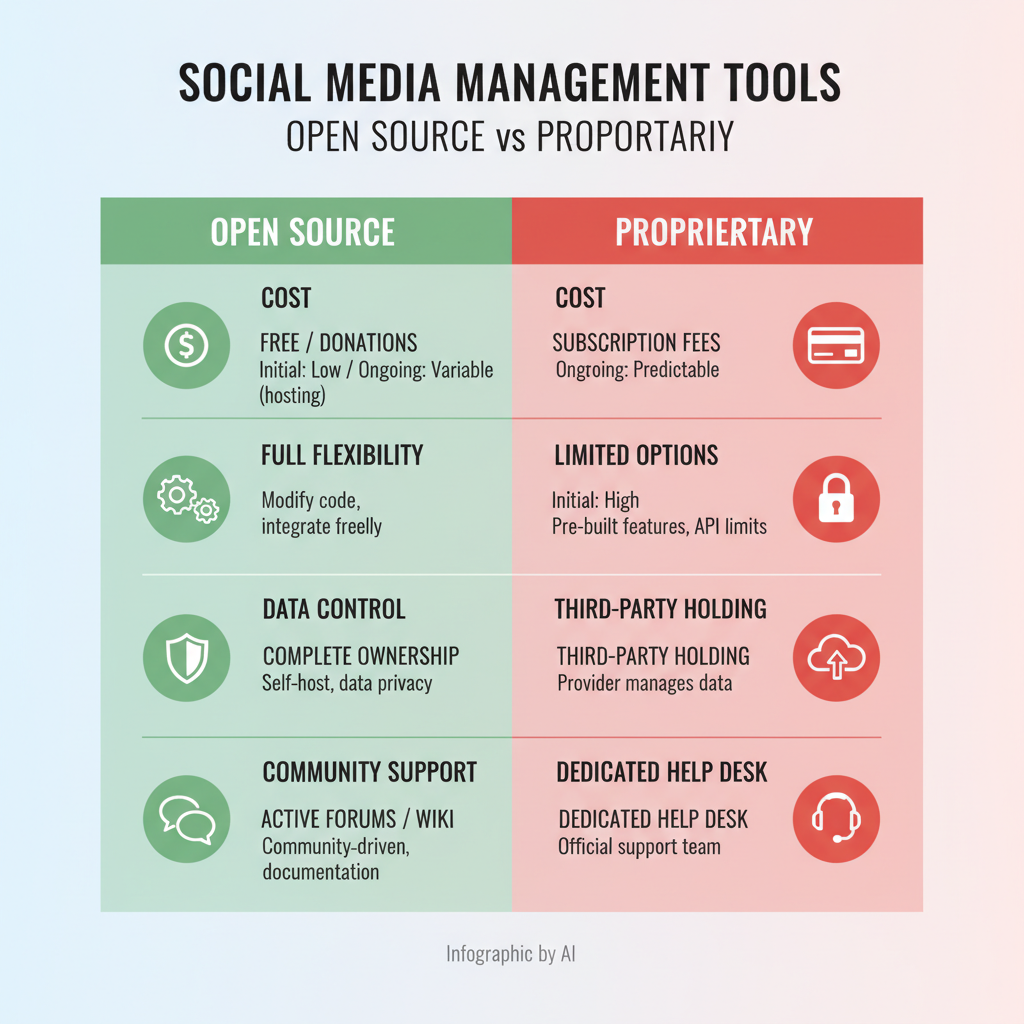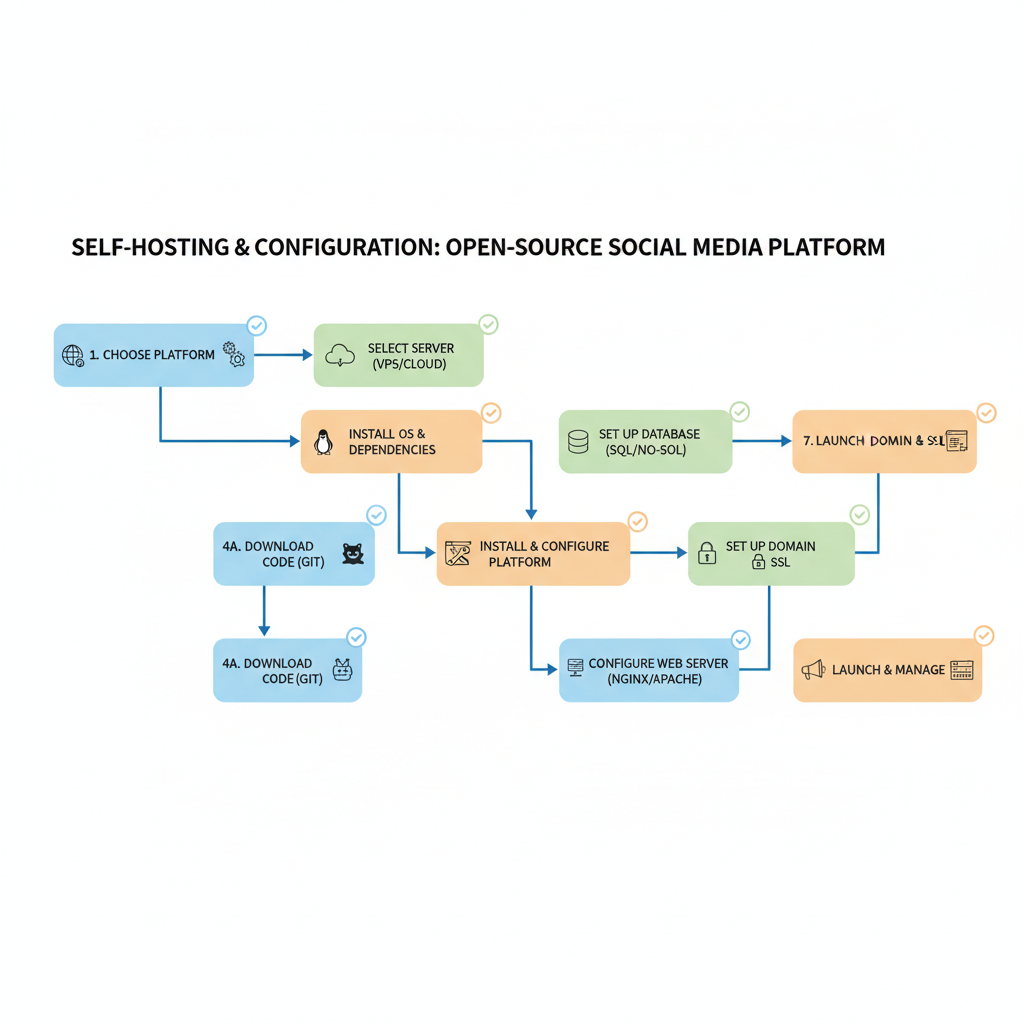Top Open Source Social Media Management Tools 2024
Discover the best open source social media management tools of 2024 with features, integrations, and community support to boost your strategy.

Introduction to Open Source Social Media Management
In today’s fast-paced digital landscape, managing multiple social media profiles efficiently is vital for businesses, influencers, and nonprofits. Open source social media management tools offer a flexible, transparent, and cost-effective alternative to proprietary platforms, enabling organizations to optimize their social strategy without vendor lock-in.
With access to publicly available source code, these solutions allow for deep customization, integration with existing systems, and freedom from restrictive licensing terms. As demand for agility and cost-efficiency grows, self-hosted and open source platforms are becoming the choice for scheduling posts, analyzing performance, and tracking engagement.

Key benefits of open source social media management include:
- Cost savings: Avoid recurring license fees; pay only for hosting and maintenance.
- Customizability: Adapt features, workflows, and interface to match unique requirements.
- Transparency: Open codebase gives insight into security and functionality.
- Community-driven innovation: Active global contributors continuously refine features.
---
Difference Between Open Source and Proprietary Social Media Management Tools
Although proprietary systems often feature polished UI elements and dedicated vendor support, they may restrict customization and integration. Open source tools, conversely, offer complete control over infrastructure and modifications.
| Aspect | Open Source | Proprietary |
|---|---|---|
| Licensing | Free under open license | Subscription-based, per-user charges |
| Customization | Full code access, highly flexible | Limited configuration options |
| Support | Community forums, extensive documentation | Vendor-provided, formal support |
| Integration | Open APIs, unrestricted integrations | May limit third-party integrations |
---
Top Criteria for Choosing an Open Source Platform
When selecting an open source social media management solution, assess the following:
- Feature Set: Scheduling, analytics, collaboration tools, and CRM connectivity.
- Community Support: An active developer and user base ensures ongoing updates.
- Scalability: Capacity to handle increased accounts, posts, and engagement over time.
- Integration Capability: Compatibility with marketing automation, CMS, or ERP.
- Security: Frequent updates, secure login protocols, compliance readiness.
---
Overview of Leading Open Source Social Media Management Tools
Several open source tools stand out in 2024 for their reliability and robust features:
- Tool 1: Posticator
- Tool 2: SocialHubX
- Tool 3: MediaDeck
Each solution offers unique strengths, from advanced API functionality to comprehensive analytics, supported by active communities.
---
Tool 1: Posticator
Posticator helps marketing teams streamline scheduling and cross-platform posting.
Features:
- Bulk scheduling across multiple networks
- Role-based permissions
- Engagement metrics via analytics dashboard
Pros:
- Quick deployment via Docker
- Rich plugin ecosystem
- Well-maintained documentation
Cons:
- Higher learning curve for non-tech teams
- Limited native mobile support
Community Size: Approx. 3,000 active contributors and users.

---
Tool 2: SocialHubX
SocialHubX focuses on integration flexibility and customization, catering to complex organizational workflows.
Features:
- RESTful API for seamless connectivity
- CRM and ERP integration (SuiteCRM, ERPNext)
- Visual content calendar
Integrations:
- Email marketing suites
- E-commerce platforms
- Web analytics services
Customization Options:
- Modular system architecture
- Theme customization via HTML/CSS
- Built-in plugin development tools
---
Tool 3: MediaDeck
MediaDeck excels in cross-device compatibility and developer-friendly API access.
Features:
- Native clients for macOS, Windows, Android, and iOS
- Real-time push notifications
- Efficient post queue management
API Access:
- Event-triggered automation via webhooks
- Secure OAuth 2.0 authentication
- GraphQL endpoints for custom analytics
---
How to Self-Host and Configure Open Source Tools
Self-hosting enhances control over both data security and function customization. Typical setup steps:
- Provision a server: VPS or dedicated hosting.
- Install dependencies: Database (MySQL/PostgreSQL), web server (Nginx/Apache).
- Fetch source code: Clone from GitHub or the official repo.
- Configure environment: Use `.env` for API keys and authentication.
- Run installer: CLI or browser-based installers available.
- Testing & Deployment: Validate integrations and monitor load performance.
Docker example:
git clone https://github.com/example/posticator.git
cd posticator
docker-compose up -d---
Security Best Practices
Protecting social account credentials and user information is critical.
Recommendations:
- Apply software updates immediately upon release.
- Enforce HTTPS connections via SSL/TLS.
- Implement two-factor authentication for administrator accounts.
- Schedule encrypted backups regularly.
- Maintain audit logs to meet compliance standards.
---
Customization Tips for Brand Alignment and Workflow Automation
Make the platform an integral part of your brand:
- Replace all default logos and colors with branded assets.
- Standardize post templates for consistent messaging.
- Automate repetitive tasks using APIs or scripts.
- Explore AI-assisted content creation for time savings.
- Use webhook events to align posting with marketing schedules.
---
Cost and Time Comparison with Proprietary Solutions
Beyond licensing costs, evaluate hosting, maintenance, and setup time investment.
| Cost/Time Factor | Open Source | Paid Tools |
|---|---|---|
| Licensing | $0 | $50–$200/month |
| Hosting | $10–$50/month | Included |
| Support | Free community, optional paid tiers | Vendor-included |
| Setup Time | 8–20 hours | 1–3 hours |
---
Case Studies: Successful Implementation
Case Study 1 – Boutique Marketing Agency
- Adopted Posticator to manage multiple client accounts.
- Cut annual costs by 40%.
- Enhanced collaboration with role-based access.
Case Study 2 – E-commerce Startup
- Implemented SocialHubX to sync product launches with campaigns.
- Increased engagement rates by 25% within three months.
Case Study 3 – Nonprofit Organization
- Leveraged MediaDeck mobile apps for live event coverage.
- Enabled volunteers to manage updates in real time.

---
Final Thoughts: Choosing Your Best Fit in 2024
Your ideal open source social media management platform will align with your target features, integration preferences, and budget.
- For comprehensive scheduling and analytics, choose Posticator.
- For complex workflow automation, opt for SocialHubX.
- For multi-device compatibility and developer control, MediaDeck is ideal.
By assessing each platform’s strengths, community support, security features, and overall cost of ownership, you can implement a solution that saves money and scales with your growth—ensuring smarter, smoother social media management for 2024 and beyond.
---
Summary:
Open source social media management offers enterprises and creators a customizable, transparent, and cost-effective way to streamline marketing and engagement. Whether you prioritize flexibility, integration, or analytics, platforms like Posticator, SocialHubX, and MediaDeck provide powerful options to suit varied needs. Ready to take control of your social strategy? Explore these tools today and harness community-driven innovation for your brand’s success.




